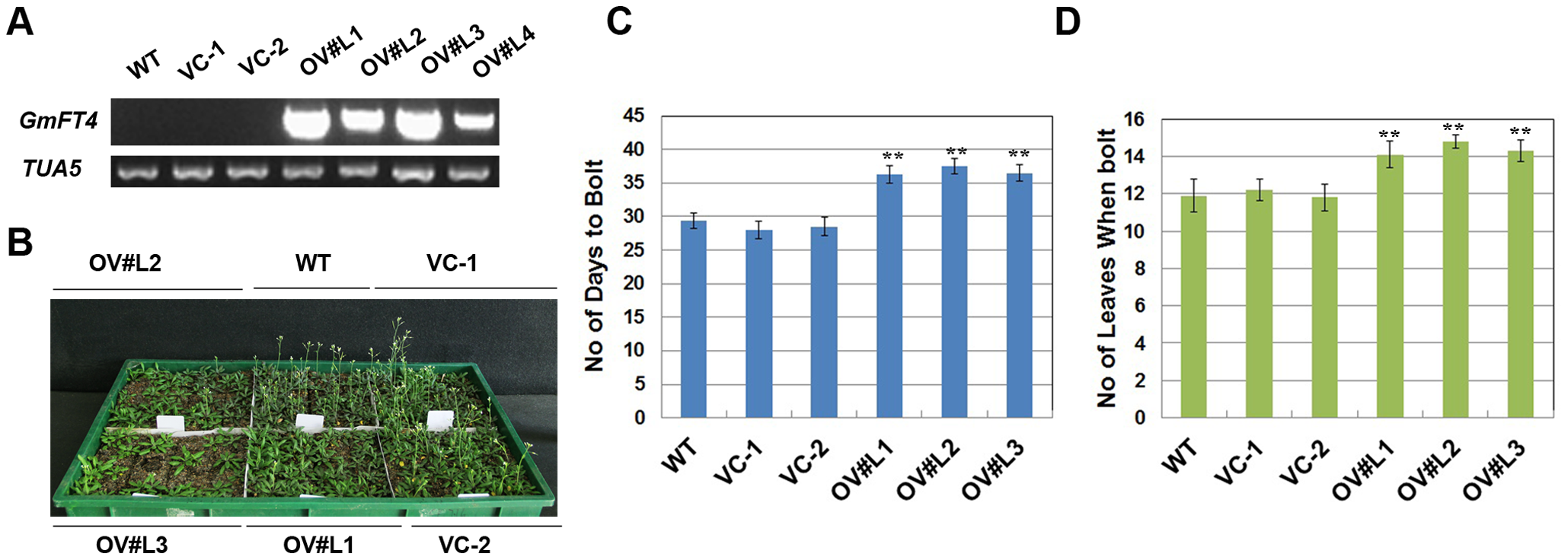东北地理所在Plos one报道与大豆发育相关联基因GmFT4
中国科学院东北地理与农业生态研究所大豆分子设计育种重点实验室夏正俊研究组继成功克隆了大豆生育期基因E1后,在E1基因的作用机理研究方面取得了新的进展,发现了一个与E1表达相关联的基因GmFT4。相关文章发表于2014年2月19日的《PLoS ONE》杂志上。

东北地理所在PLOS one报道与大豆发育相关联基因GmFT4
在不同的大豆品种中,E1的基因型及表达量都与GmFT4的表达量显著相关。GmFT4在长日条件下诱导表达,并呈现一定的节律性,且这种节律受光调节,但在短日条件下表达受抑制。近年来研究表明FT蛋白为被子植物中的“成花素”,在植物叶中产生,通过输导组织运输到茎顶端分生组织,促进植物开花。
GmFT4虽然属于FT家族蛋白,但功能与GmFT2a/5a相反,是大豆开花的抑制因子。将GmFT4在模式植物拟南芥中过量表达可抑制拟南芥开花。据此推测,GmFT4可能在E1调控大豆开花通路中起重要作用,同时提出了“大豆中开花抑制因子GmFT4与开花促进因子GmFT2a/5a之间的平衡,决定着大豆的开花与成熟”。
论文的第一作者为大豆分子育种学科组助理研究员翟红博士。本研究受国家自然科学基金、中国科学院百人计划及先导专项等项目资助。
原文摘要:
GmFT4, a Homolog of FLOWERING LOCUS T, Is Positively Regulated by E1 and Functions as a Flowering Repressor in Soybean
Hong Zhai,Shixiang Lü,Shuang Liang,Hongyan Wu,Xingzheng Zhang,Baohui Liu,Fanjiang Kong,Xiaohui Yuan,Jing Li,Zhengjun Xia
The major maturity gene E1 has the most prominent effect on flowering time and photoperiod sensitivity of soybean, but the pathway mediated by E1 is largely unknown. Here, we found the expression of GmFT4, a homolog of Flowering Locus T, was strongly up-regulated in transgenic soybean overexpressing E1, whereas expression of flowering activators, GmFT2a andGmFT5a, was suppressed. GmFT4 expression was strongly up-regulated by long days exhibiting a diurnal rhythm, but down-regulated by short days. Notably, the basal expression level of GmFT4 was elevated when transferred to continous light, whereas repressed when transferred to continuous dark. GmFT4 was primarily expressed in fully expanded leaves. Transcript abundance of GmFT4 was significantly correlated with that of functional E1, as well as flowering time phenotype in different cultivars. Overexpression of GmFT4 delayed the flowering time in transgenic Arabidopsis. Taken together, we propose that GmFT4 acts downstream of E1 and functions as a flowering repressor, and the balance of two antagonistic factors (GmFT4 vs GmFT2a/5a) determines the flowering time of soybean.

